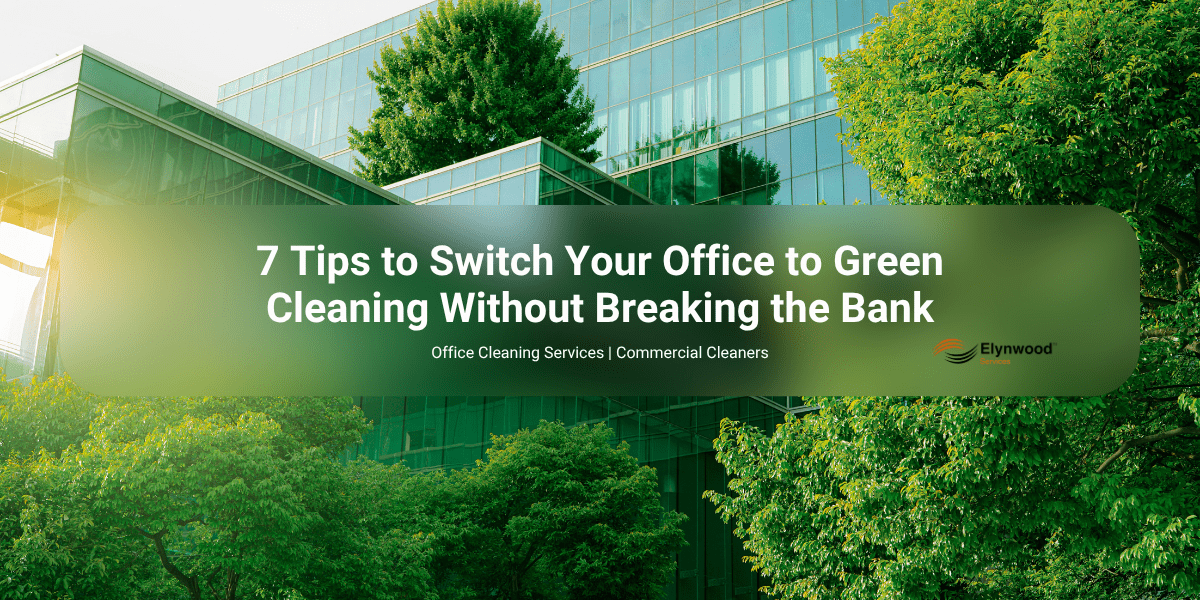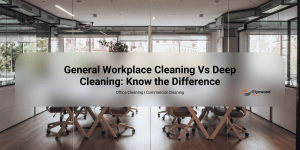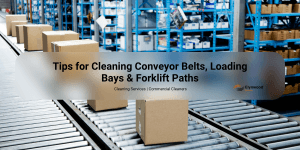Green cleaning doesn’t have to mean higher costs or complex changes. Many businesses assume that going eco-friendly Cleaning involves specialist products, long contracts, or brand overhauls. In reality, small shifts can make a big difference both to your environmental footprint and your cleaning budget.
Whether you’re managing a small office or a larger commercial space, here are seven straightforward tips to help you move towards greener cleaning practices, without the added expense.
1. Less is More.. Really
One of the most common mistakes in office cleaning is overstocking cleaning supplies. It’s easy to end up with different sprays and wipes for every surface, most of which do the same job.
What to do instead:
- Choose multi-purpose cleaners that meet environmental standards
- Avoid products with strong synthetic fragrances these often contain unnecessary additives
- Check if products are certified by recognised bodies (GECA, Good Environmental Choice Australia)
Fewer products mean fewer storage issues, less waste, and lower ongoing spend.
2. Switch to Refillable Dispensers
Single-use containers and disposable bottles add up fast. Refillable options cut down on both waste and cost over time.
Apply this to:
- Hand soap and sanitiser dispensers
- Multi-purpose cleaning sprays
- Glass and mirror cleaners
- Washroom cleaning products
Most commercial suppliers now offer concentrate refills or bulk supply options which also means fewer deliveries and less packaging waste.
3. Choose Microfibre Over Disposable Wipes
Microfibre cloths are reusable, washable, and more effective at picking up dust and bacteria than standard rags or paper towels.
Why it works:
- They clean well using only water or small amounts of cleaner
- They can be washed and reused hundreds of times
- They don’t shred or leave residue on surfaces
Set up a simple collection point for used cloths, and rotate them through the laundry cycle as part of regular operations. It’s cheaper than buying boxes of disposable wipes every month.
4. Clean With Cold Water Where Possible
Hot water increases energy use and in many cases, it isn’t necessary. Most commercial-grade cleaners work just as well with cold water, especially when used with mechanical action (e.g. scrubbing or mopping).
Try using cold water for:
- Floor mopping
- Surface wiping
- Window cleaning
- Break room clean-ups
Check product instructions if hot water isn’t required, don’t use it. Lower electricity bills, less strain on plumbing, and no drop in cleaning performance.
5. Audit Your Cleaning Schedule
In some offices, areas are cleaned daily when weekly would be enough. In others, deep cleans are skipped until a problem comes up.
Review the following:
- Frequency of general surface cleans
- Bin emptying especially in meeting rooms or unused spaces
- Floor care in low-traffic areas
- Window and glass cleaning intervals
Adjusting cleaning frequency saves labour time, reduces chemical use, and avoids waste. A cleaner working three times a week with a clear schedule is more effective than one doing a full clean daily without need.
6. Train Cleaners on Green Practices
Products and equipment don’t do much without the right handling. If you’re using a professional cleaning service, confirm their staff are trained on how to apply green methods, not just use green-branded products.
This includes:
- Using the correct dilution ratios (avoiding overuse)
- Choosing the right cloth or mop for the surface
- Limiting waste and avoiding product overapplication
- Proper storage and handling of concentrates
For internal teams, short training sessions or printed guidance sheets can make a difference. Consistent use matters more than intent.
7. Work With a Cleaning Provider Who Already Operates Sustainably
If you’re reviewing contracts or planning ahead for new suppliers, ask the right questions. A provider who already has systems in place like low-chemical processes, waste separation, and environmentally rated supplies can do more with less. That translates to real cost savings over time.
What to ask:
- Do you use GECA-certified or equivalent products?
- How do you minimise plastic or single-use waste?
- Do your staff follow cold-water or low-impact methods?
- Can you adjust cleaning frequency based on our actual use?
Green cleaning is just simple methods and not overcomplicating things with chemicals..
Final Note
Shifting to greener cleaning shouldn’t break your pockets. It means looking closely at what’s used, how often, and why then making smarter choices based on what works. Less waste, better habits, and fewer unnecessary products all lead to a more sustainable cleaning setup both environmentally and financially.
Need Help Setting Up a Low-Waste, Practical Cleaning Plan?
Elynwood helps offices across Australia clean more responsibly, using certified products, low-impact methods, and trained teams who understand how to work around your staff and hours. Whether you’re ready to make a change or just want advice on where to start, we’ll walk through your space and show what’s possible.
FAQ
1. Does green cleaning cost more?
A. Not necessarily. Many green cleaning practices, such as using multi-purpose cleaners and refillable dispensers, can actually reduce costs in the long run by cutting down on waste and product usage.
2. How can I reduce the number of cleaning products I use?
A. Opt for multi-purpose cleaners that meet environmental standards. This helps minimize the number of products needed, reduces waste, and simplifies storage.
3. Why should I switch to microfibre cloths instead of disposable wipes?
A. Microfibre cloths are reusable, more effective at cleaning, and last for hundreds of washes. This not only reduces waste but also lowers your recurring costs compared to constantly buying disposable wipes.
4. Can I clean effectively with cold water?
A. Yes! Most commercial cleaners work just as well with cold water. Using cold water reduces energy consumption, lowers electricity bills, and still maintains excellent cleaning results.
5. How can I find an eco-friendly cleaning service?
A.When choosing a cleaning service, ask if they use certified green products, minimize plastic waste, and follow low-impact cleaning practices like using cold water and adjusting schedules based on usage.







